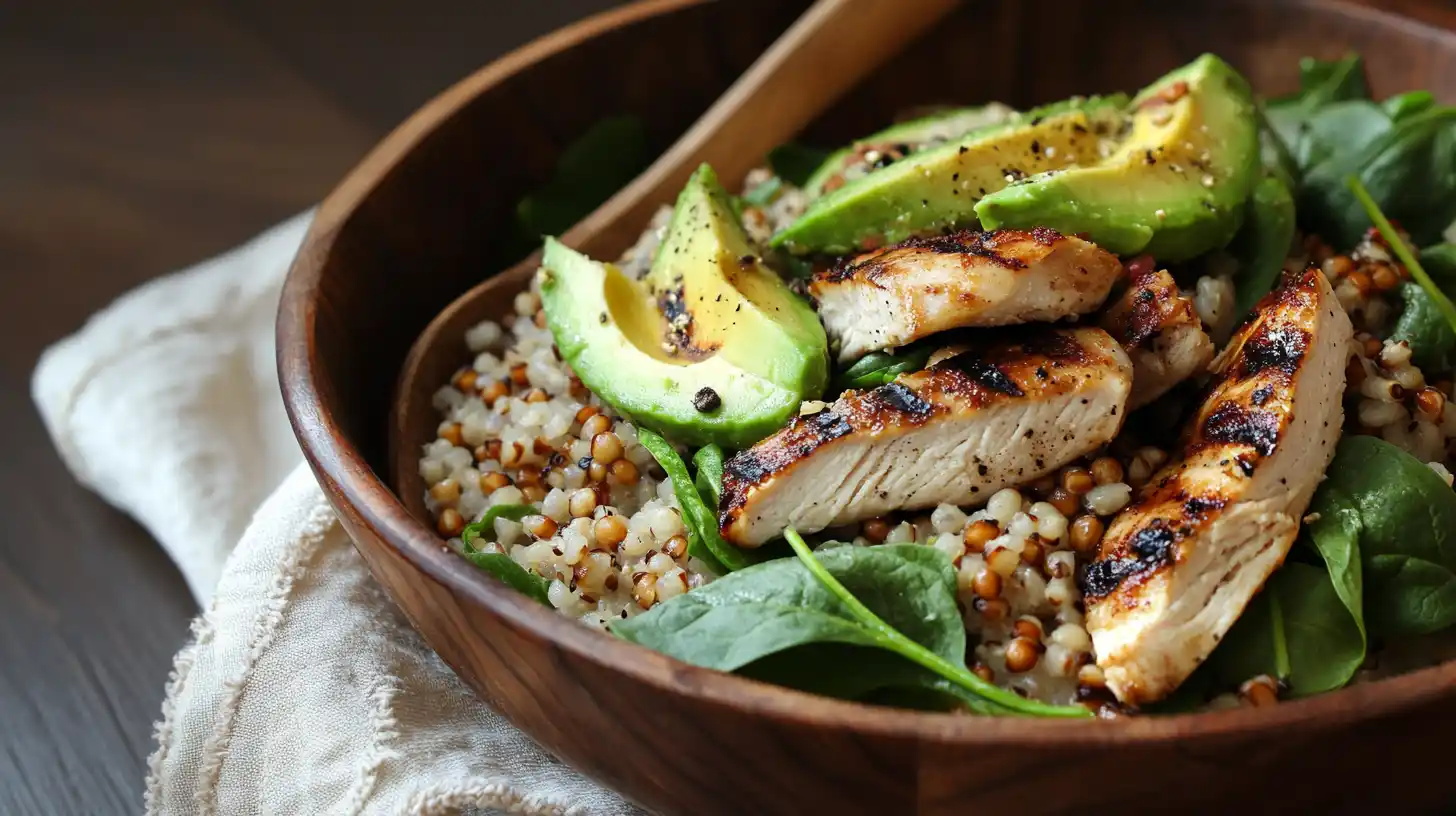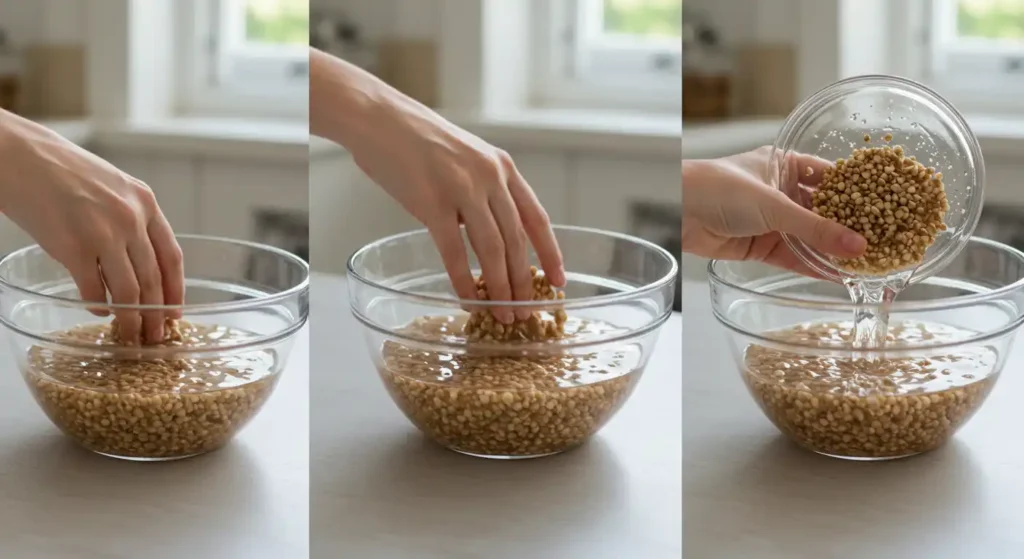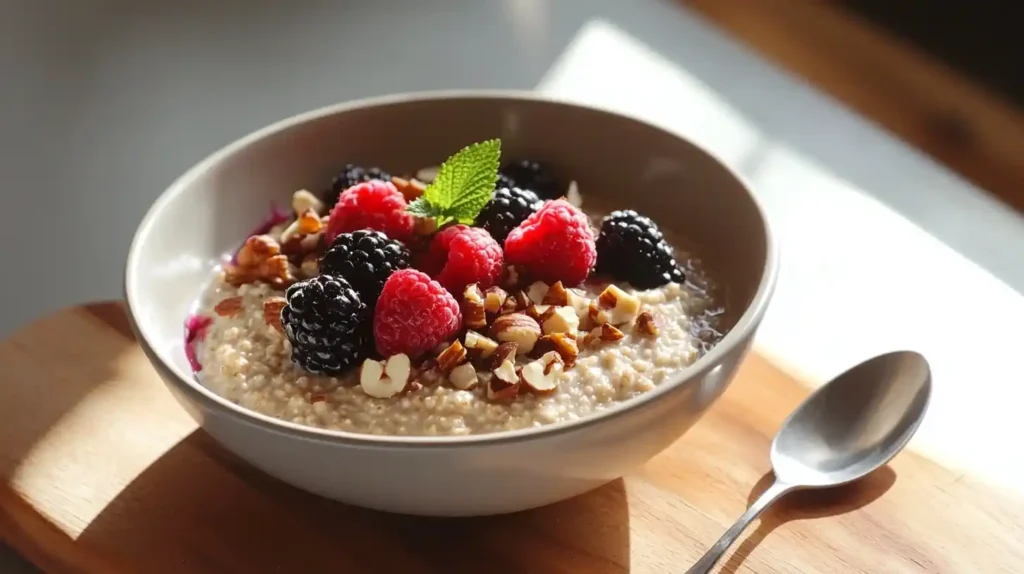
Kasha, a traditional dish made from roasted buckwheat groats, is a beloved staple in many cuisines. While it’s packed with fiber, essential minerals, and plant-based protein, buckwheat isn’t naturally low in carbs. But here’s the good news — with a few clever tweaks, you can reduce the carb content and transform kasha into a low-carb-friendly option without sacrificing flavor.
In this article, we’ll explore everything from kasha’s nutritional profile to smart substitutions, cooking techniques, and recipe ideas. By the end, you’ll know exactly how to make kasha low carb and incorporate it into your healthy lifestyle. Let’s dive in!
Understanding Kasha and Its Nutritional Profile
What Is Kasha?
Kasha refers to toasted buckwheat groats—a hearty, nutty grain-like food commonly used in Eastern European and Russian cuisine. Despite the name, buckwheat isn’t wheat at all! It’s a seed, making it naturally gluten-free and packed with plant-based goodness.
Traditionally, kasha is prepared as a hot cereal, a base for savory dishes, or a filling for dumplings. It’s versatile, easy to cook, and provides a satisfying, earthy flavor that pairs well with both sweet and savory ingredients.
Buckwheat groats become kasha when they are roasted, a process that enhances their flavor and improves texture. But despite its many nutritional benefits, traditional kasha is quite carb-heavy, which can be a problem for those on low-carb diets.
Nutritional Breakdown of Traditional Kasha
Before we dive into low-carb alternatives, let’s take a closer look at the nutritional profile of buckwheat groats.
A 1-cup serving of cooked kasha contains:
- Carbohydrates: 33 grams
- Protein: 6 grams
- Fiber: 5 grams
- Calories: 155
While it offers healthy carbs and essential nutrients like magnesium, manganese, and phosphorus, its carb content can be a bit high for those following low-carb or keto diets.
However, don’t worry! By tweaking your preparation methods and combining it with low-carb ingredients, you can enjoy the benefits of kasha without the carb overload.
Key Takeaways for a Low-Carb Diet
- Kasha is high in fiber and gluten-free, making it a healthier option compared to traditional grains.
- Traditional kasha has too many carbs for strict low-carb diets, but simple adjustments can make it more suitable.
- Choosing the right cooking techniques and portion sizes is key to enjoying kasha without the extra carbs.
Why Choose a Low-Carb Diet?
Benefits of a Low-Carb Diet
A low-carb diet offers more than just weight loss benefits. It’s a lifestyle change that can help stabilize blood sugar levels, reduce cravings, and even improve energy levels throughout the day. For those managing conditions like type 2 diabetes or insulin resistance, reducing carbohydrate intake can drastically improve overall health.
Switching to a low-carb diet may also boost mental clarity and help combat the dreaded afternoon slump. By cutting out high-carb meals and opting for low-carb alternatives like low-carb kasha, you’re feeding your body with what it needs to stay active and alert.
Plus, low-carb diets often lead to reduced inflammation, better digestion, and improved cholesterol levels. It’s not just about weight loss—it’s about long-term wellness.
Common High-Carb Foods to Avoid
When trying to cut carbs, you need to be mindful of common high-carb foods that can sneak into your diet. Here’s a list to keep in mind:
- Grains like rice, pasta, and bread
- Starchy vegetables such as potatoes, corn, and peas
- Sugary snacks including pastries, candies, and sodas
Instead, swap these with low-carb alternatives, like cauliflower rice or zucchini noodles, to keep your meals balanced. And yes, you can even make traditionally carb-heavy meals like kasha low carb by making a few smart substitutions.
How to Make Kasha Low Carb: Tips and Substitutions

Choosing the Right Buckwheat Groats
To make kasha low carb, start with the right type of buckwheat groats. While whole groats are nutritious, roasted groats tend to have a slightly higher glycemic index. Opt for unroasted buckwheat to reduce the carb impact.
Also, consider the portion size. A small bowl of kasha, when prepared correctly, can be satisfying and healthy without overloading on carbs.
Low-Carb Preparation Methods
The way you cook kasha can make a significant difference in reducing its carb content. Here are a few tips to keep your kasha dishes lower in carbs:
- Rinse and Soak:
Rinsing buckwheat groats thoroughly before cooking removes excess starch. Soaking the groats overnight can further reduce their carb load by breaking down some of the starches. - Use Vegetable-Based Broth:
Instead of cooking kasha in water, try using a low-carb vegetable broth. This adds flavor without increasing the carb count. - Pair with Low-Carb Ingredients:
Pairing your kasha with leafy greens, avocado, or grilled chicken can turn it into a nutrient-dense, low-carb meal.
Low-Carb Additions and Mix-Ins
Want to boost flavor and nutrition in your low-carb kasha? Here are some ideas:
- Vegetables like spinach, kale, or mushrooms
- Healthy fats from avocado or olive oil
- Protein sources like grilled tofu, salmon, or eggs
Adding these ingredients not only keeps the carb count in check but also ensures that your meal is well-rounded and satisfying.
For more ideas on using nutritious ingredients in your meals, check out this helpful guide on cottage cheese flatbread recipes from Totally Foodie.
Recipe Ideas for Low-Carb Kasha

Savory Low-Carb Kasha Bowl
Looking for a filling meal that’s low in carbs but high in flavor? Try a savory kasha bowl loaded with vegetables and lean protein. Here’s how to make it:
Ingredients:
- 1/2 cup unroasted buckwheat groats (rinsed and soaked)
- 1 cup vegetable broth (low-sodium)
- 1/2 cup spinach, chopped
- 1/4 cup mushrooms, sliced
- 1/4 avocado, diced
- Grilled chicken breast or tofu for protein
Instructions:
- Cook the buckwheat groats in vegetable broth for about 10-12 minutes until tender.
- In a pan, sauté mushrooms and spinach with a little olive oil.
- Once the kasha is done, combine it with the sautéed vegetables.
- Top with diced avocado and your protein choice.
- Season with salt, pepper, and your favorite herbs.
This hearty bowl is perfect for lunch or dinner. It’s packed with fiber and protein to keep you full without the carb overload.
Sweet Low-Carb Kasha Porridge
If you’re craving something sweet, this low-carb kasha porridge is a great way to start your day.
Ingredients:
- 1/2 cup unroasted buckwheat groats
- 1 cup unsweetened almond milk
- 1 tbsp chia seeds
- 1 tsp vanilla extract
- Sweetener of your choice (like stevia)
- Fresh berries and nuts for topping
Instructions:
- Cook the buckwheat groats in almond milk until soft and creamy.
- Stir in the chia seeds and vanilla extract.
- Sweeten to taste and top with berries and nuts.
This porridge is creamy, comforting, and totally customizable!
For more creative breakfast ideas, check out this guide on mini pancake breakfast tips.
Tips for Incorporating Low-Carb Kasha in a Healthy Lifestyle
Pairing Kasha with Low-Carb Dishes
One of the easiest ways to enjoy low-carb kasha without compromising your diet is by pairing it with the right foods. Since kasha is already filling, you’ll want to balance it out with low-carb veggies and healthy fats.
For example, a kasha bowl paired with leafy greens like spinach or kale can create a well-rounded, nutrient-dense meal. You could also top it with grilled proteins such as chicken, salmon, or tofu to make it more satisfying without adding extra carbs.
Another smart move is to add cauliflower rice or zucchini noodles to your kasha dishes. These low-carb options help stretch your servings while keeping the carb count in check. And don’t forget to drizzle some olive oil or sprinkle nuts for added flavor and healthy fats!
Portion Control and Meal Planning
Even when you’ve figured out how to make kasha low carb, portion control is key to staying within your daily carb limit. It’s easy to overdo it with any grain or grain alternative, so measure your servings carefully.
Meal planning can also make a big difference. Cook a batch of kasha ahead of time and portion it into small containers. That way, you’re less likely to overeat, and you’ll always have a quick, healthy option on hand.
Planning meals ahead also gives you the chance to mix things up. For instance, use leftover kasha in a low-carb veggie stir-fry or toss it into a fresh salad for a quick lunch.
FAQs About Low-Carb Kasha
Is Kasha Low in Carbs?
No, traditional kasha is not considered low in carbs. However, with some adjustments—such as using smaller portions, selecting unroasted groats, and pairing it with low-carb ingredients—you can make it a better fit for a low-carb diet.
How to Make Buckwheat for Weight Loss?
To make buckwheat more weight-loss-friendly, reduce the portion size and increase the amount of vegetables and protein in your dish. Using broth instead of water for cooking adds flavor without extra calories.
How Many Carbs Are in Cooked Kasha?
A 1-cup serving of cooked kasha contains around 33 grams of carbohydrates. This number can be lowered by adjusting preparation methods, like rinsing and soaking the groats before cooking.
How to Make Rice Lower Carb?
A great trick to lower the carb content in rice is to pair it with vegetables like cauliflower rice. You can also rinse rice before cooking to remove excess starch. Similarly, the how-to-make kasha low-carb process involves soaking and using unroasted groats to reduce carb intake.
Common Mistakes to Avoid When Making Low-Carb Kasha
Using the Wrong Type of Buckwheat Groats
One of the biggest mistakes people make when trying to learn how to make kasha low carb is selecting the wrong type of buckwheat. Roasted groats, often labeled as “kasha,” tend to have a higher glycemic index. To keep your kasha dish low in carbs, opt for unroasted buckwheat groats, which have a lower carb impact and a milder flavor.
Additionally, some people skip the crucial step of soaking and rinsing the groats. This simple process helps reduce the carb content by breaking down some of the starches. So, always rinse thoroughly and soak the groats before cooking.
Ignoring Portion Sizes
Even when you’ve adjusted your cooking method, portion control is essential for keeping your dish low-carb. Many assume that buckwheat is a carb-free alternative because it’s gluten-free, but that’s not the case. While it’s a healthier choice than rice or pasta, it still contains carbs.
To avoid going overboard, stick to small servings and balance your meal with low-carb sides like vegetables or leafy greens. Tracking your portions can help you maintain your carb goals while enjoying your favorite dishes.
Finally, don’t forget to check your toppings and mix-ins. Adding high-carb ingredients like sweet sauces or sugary fruits can quickly undo all your efforts. Instead, choose low-carb toppings such as avocado, nuts, or fresh herbs.
Final Thoughts on Making Kasha Low Carb
Now that you’ve learned how to make kasha low-carb, you can enjoy this classic dish without worrying about carb overload. By choosing the right type of buckwheat, adjusting your cooking methods, and keeping portions in check, you can turn a traditionally carb-heavy meal into a healthy, low-carb option.
Remember, the key is balance. Pair your kasha with nutrient-rich veggies, lean proteins, and healthy fats to create a well-rounded meal that fits your lifestyle. It’s not just about cutting carbs — it’s about making better choices for your overall health.
Don’t be afraid to experiment with your recipes! Whether you prefer a savory kasha bowl or a sweet porridge, there are plenty of ways to tweak your dish to suit your taste. And if you’re looking for more creative ways to enjoy low-carb meals, explore our guide on healthy breakfast ideas for more inspiration.
In the end, making small adjustments can lead to big health benefits. With the tips in this guide, you’ll be able to enjoy your favorite kasha recipes without compromising your low-carb goals.

